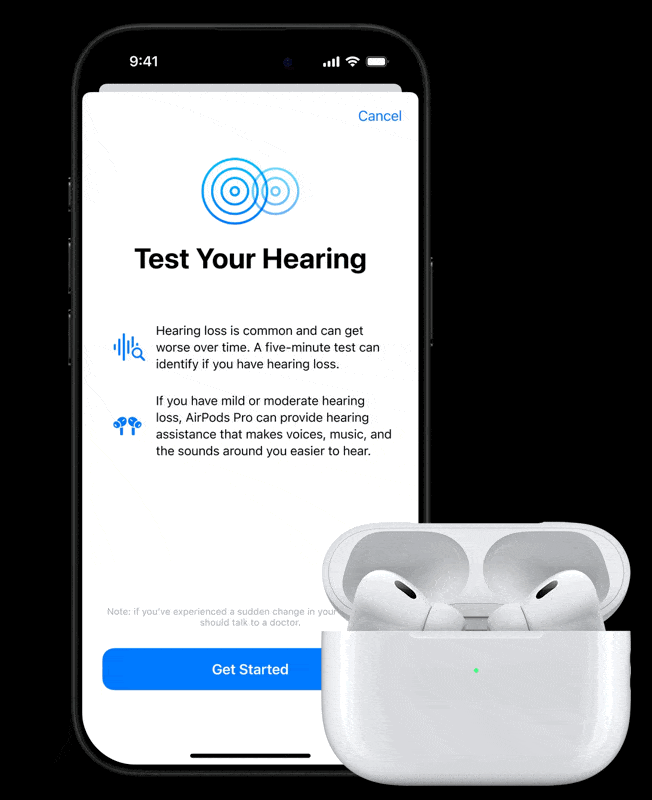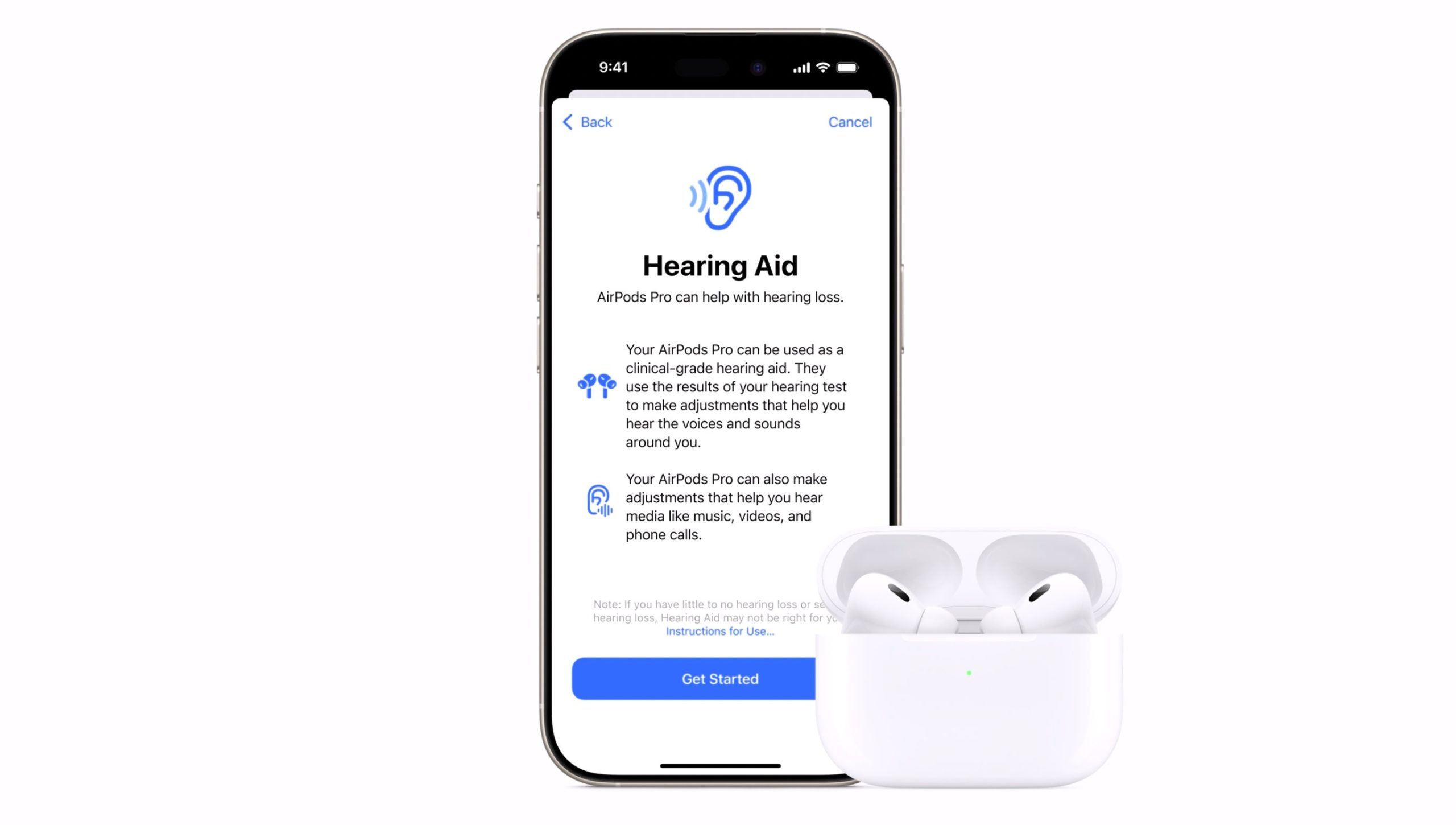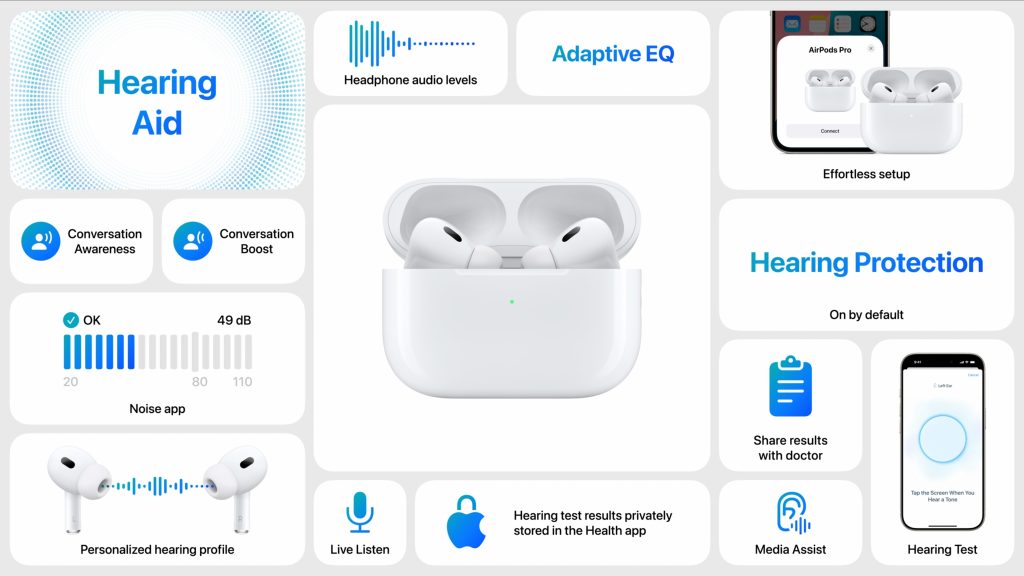Introduction
The AirPods Pro 2’s hearing health features can help people with mild to moderate hearing loss hear their surroundings (voices, music, and sounds) more clearly. Users can complete a clinically validated hearing test and access hearing health metrics on their iPhone, and the AirPods Pro 2 will adjust the audio output based on their results.
Feature 1: Hearing Test
To start, users will need a pair of AirPods Pro 2 and an iPhone or iPad. Next, they will need to complete a 5-minute clinically validated hearing test on the Health App. The entire test can be conducted at home. Users can simply
- Tap the screen when they hear a tone playing at different frequencies
- View the results (audiogram) of their hearing health profile on the iPhone Health app
- Share the results with their healthcare providers

Compared to existing over-the-counter (OTC) hearing aids that typically cost between $1,000 and $1,500, the AirPods Pro 2 are just priced at $249, making it very affordable to people with hearing loss. However, the AirPods Pro’s hearing test feature is exclusive to use with an iPhone or iPad, which forces users to remain in the Apple ecosystem. Not only that, the feature hasn’t been FDA-cleared yet; these two factors all contribute to its low compatibility.
The hearing test feature aligns with the functional solutions model of disability because it helps users identify their level of hearing loss with a straightforward process and easy-to-understand results. This is convenient for users who are unable to visit a doctor due to cost, time, and mobility constraints.
Feature 2: Hearing Aid
If the test detects hearing loss, the hearing aid feature will become available. When users listen to audio, including music, phone calls, games, movies, and podcasts across devices, a customized hearing profile will be automatically applied. This new feature converts the AirPods Pro into a clinical-grade hearing aid.
From the social model of disability perspective, this feature helps people with hearing loss remove the stigma associated with wearing hearing aids. AirPods Pro inspired the modern creative design of OTC hearing aids, allowing them to blend seamlessly with regular earbuds. This raises the desirability of the AirPods Pro to be used as hearing aids by people with hearing loss on a regular basis. The hearing aid feature also aligns with the functional solutions model of disability; it boosts frequencies so sounds are more vibrant and clear to users’ ears. On top of that, users can also make real-time adjustments on the balance, amplification, and tone to meet their needs.

Feature 3: Hearing Protection
The active hearing protection feature (turned on by default) keeps users free from regular exposure to strong environmental noises, such as concerts and commutes. This feature is user-friendly because users don’t have to manually modify hearing settings when they are in different noise environments. Moreover, AirPod Pros is accessible and suitable for people with hearing loss, as well as those who want to prevent hearing loss.
Conclusion
The hearing health features of the AirPods Pro 2 iPhone provide great utility to people with hearing loss. This technology allows them to hear clearly and engage in conversations with multiple speakers in noisy environments. Although these features are not officially available yet, I am very excited about how this product can empower people affected by hearing loss in the future.
References
- https://www.apple.com/airpods-pro/hearing-health/
- https://appleinsider.com/articles/24/09/09/airpods-pro-2-to-be-clinical-grade-hearing-aid-with-update
- https://techcrunch.com/2024/09/09/apple-says-airpods-pro-2-can-be-used-as-clinical-grade-hearing-aids/
- https://9to5mac.com/2024/09/09/airpods-pro-2-adds-clinical-grade-hearing-aid-feature/
- https://www.theverge.com/2024/9/9/24236881/apple-airpods-pro-second-gen-hearing-aid-protection-features-update
- https://www.zdnet.com/article/your-airpods-pro-2-can-soon-double-as-over-the-counter-hearing-aids-heres-how/
- https://www.engadget.com/audio/headphones/apples-airpods-pro-update-turns-them-into-a-clinical-grade-hearing-aid-174919818.html
